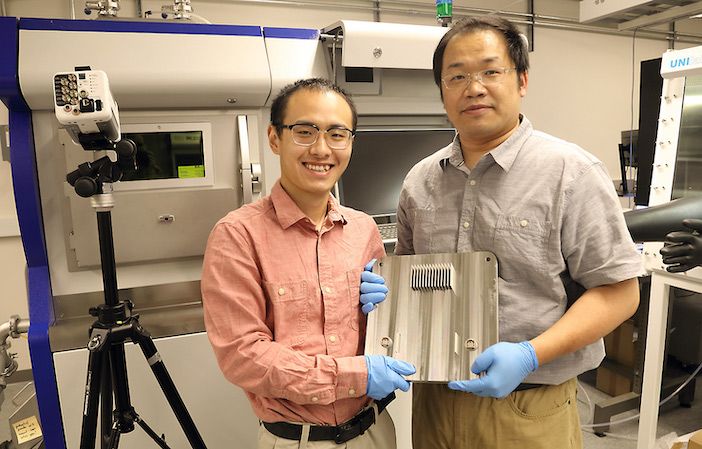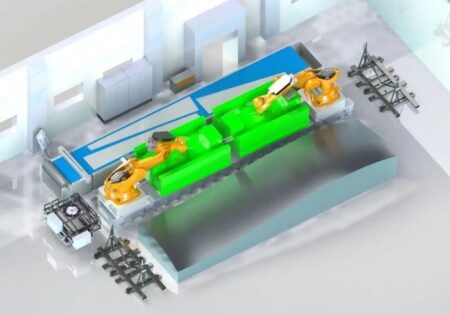US Researchers have developed a way to detect keyhole porosity during laser powder bed fusion additive manufacturing, opening up the possibility of using the 3D printing process in more parts of an aircraft.
The new inspection approach combines x-ray and near-infrared imaging processes to detect the exact moment a keyhole pore forms during the printing process. It could significantly expand the use of 3D printed metal parts in aerospace by improving their strength and durability.
Keyhole pores are one of the major defects in the commonly-used additive manufacturing (AM) technique laser powder bed fusion (LPBF).
LPBF uses lasers to 3D print metal parts by melting layers of metal powder on top of each other. The process is often able to produce intricate parts that would not be possible using subtractive methods.
However, porosity defects remain a major barrier to LPBF’s use in fatigue-sensitive applications like aircraft wings. Some porosity is associated with deep and narrow vapor depressions – the so-called keyholes.
The formation and size of the keyhole is a function of laser power and scanning velocity, as well as the materials’ capacity to absorb laser energy. If the keyhole walls are stable, it enhances the surrounding material’s laser absorption and improves laser manufacturing efficiency.
However, if the walls are wobbly or collapse the material solidifies around the keyhole, trapping the air pocket inside the newly formed layer of material. This makes the material more brittle and more likely to crack under environmental stress.
A team of researchers from Carnegie Mellon University, the University of Wisconsin, and the University of Virginia have developed a real-time keyhole detection method.
Tao Sun, associate professor of materials science and engineering at the University of Virginia and lead on the research program said, “By integrating operando synchrotron x-ray imaging, near-infrared imaging and machine learning our approach can capture the unique thermal signature associated with keyhole pore generation with sub-millisecond temporal resolution and 100% prediction rate.”
Materials science and engineering professor Anthony Rollett from Carnegie Mellon University said, “Our findings not only advance additive manufacturing research, but they can also practically serve to expand the commercial use of LPBF for metal parts manufacturing.”
The researchers also advanced how a tool — operando synchrotron x-ray imaging — can be used. Using machine learning, they additionally discovered two modes of keyhole oscillation.
“Porosity in metal parts remains a major hurdle for wider adoption of LPBF technique in some industries. Keyhole porosity is the most challenging defect type when it comes to real-time detection using lab-scale sensors because it occurs stochastically beneath the surface,” Sun added.
“Our approach provides a viable solution for high-fidelity, high-resolution detection of keyhole pore generation that can be readily applied in many additive manufacturing scenarios.”
Their peer-reviewed paper “Machine Learning Aided Real-Time Detection Of Keyhole Pore Generation In Laser Powder Bed Fusion ”was published last week in Science Magazine.
The team’s research is funded by the Department of Energy’s Kansas City National Security Campus managed by Honeywell FM&T.
Source: University of Virginia





